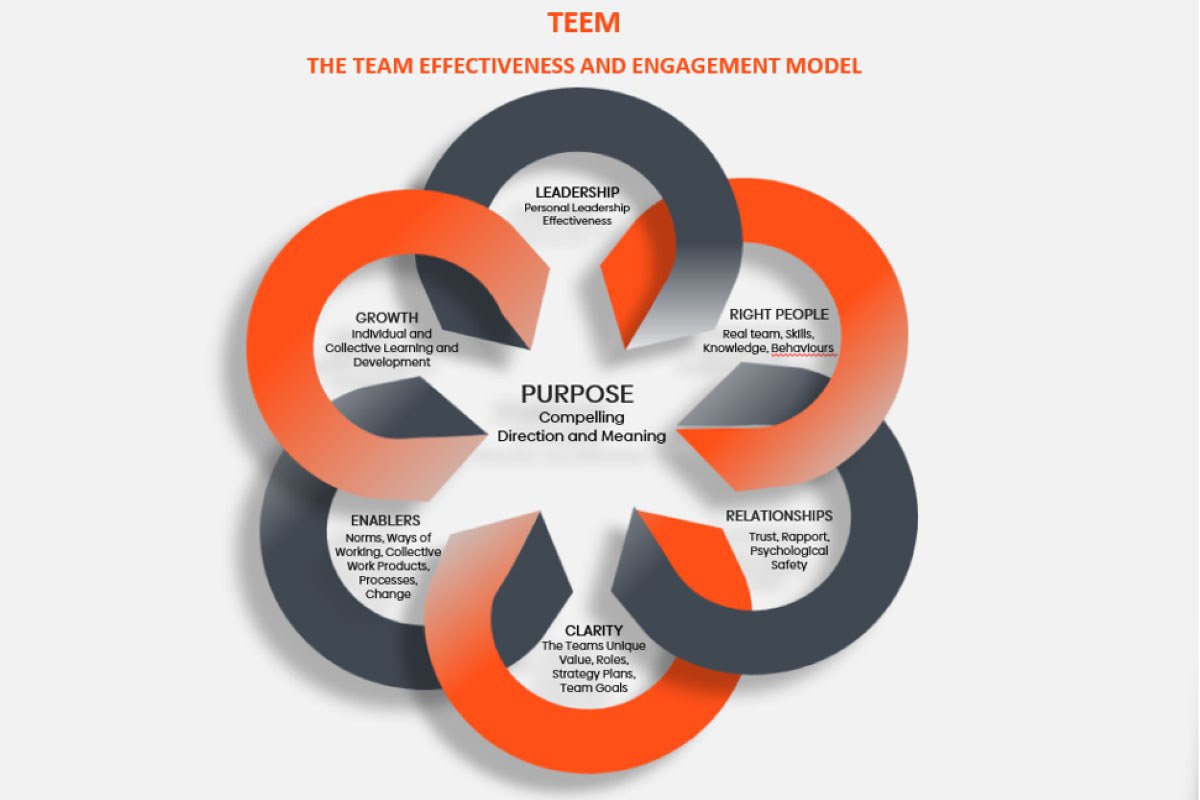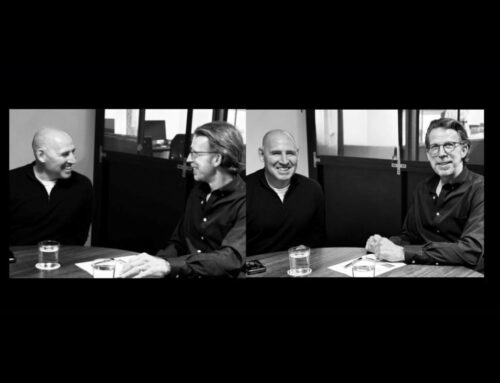
At the recent ECI Leaders Roundtable, the conversation focused on the question every leader grapples with: What really makes a team perform?
ECI Partner, Chris Corneil, reminded us that performance isn’t magic; it’s the product of disciplined systems and deliberate culture. Using ECI’s evidence-based TEEM framework (Team Effectiveness and Engagement Model) as the lens, he explored why some teams consistently achieve more, with less friction, clearer purpose and stronger connection, while others stall despite talent and intent.
Picture this: a Formula One car roars into the pit from 300 kilometres an hour. In less than two seconds, four tyres are changed, fuel systems checked, and the car released back into the race. It’s the ultimate choreography of high-stakes expertise, trust and timing.
Or consider a Broadway cast of Cats, still performing after 40 years. Every dancer, musician, stagehand and lighting tech knows their role, delivering the same flawless performance night after night.
These are not metaphors for performance. They are performance. And they illustrate the heart of the TEEM framework: high-performing teams are complex human systems, not just groupings of people.
Teams are Complex Systems
Every humanbeing is already a complex system, in fact, eleven subsystems working together just to get us out of bed. Put two humans side by side and you’ve got another layer of complexity. Scale that up: a team, an organisation, a sector, and finally the volatile environment we all operate in today. To build resilience and performance in this kind of complexity, leaders need a way to diagnose what supports, and what degrades, effectiveness of human systems. TEEM (Team Effectiveness and Engagement Model) offers that construct: an evidence-based, meta-model that surfaces the elements that matter most in complex human systems.
Purpose: The Super Juice
Every high-performing team begins with purpose. Not the corporate wallpaper variety, but something that grabs people by the head and heart.
The classic JFK story captures it: when he asked a NASA janitor what his job was, the reply was, “I’m helping put a man on the moon.” That’s purpose.
Nike’s founding rally cry? “Kill Adidas.” Emotive, clear, and unifying. The Cancer Council? “Reduce the incidence and impact of all cancers for all Australians.” No poster needed.
When people see their role in the bigger mission, whether they’re a CFO, an engineer, or an accounts receivable clerk, work becomes more meaningful. Purpose is the super fuel.
Leadership: More Than Management
Research consistently shows that over 50% of a team’s effectiveness can be traced to leadership. Not the title, but the behaviour.
The best leaders operate on two levers:
- The explicit — strategy, budgets, risk controls, etc.
- The implicit — relationships, trust, psychological safety, etc.
Neglect one, and the team runs one-handed. Effective leaders consciously balance management and leadership, knowing when to step in, and when to step back.
The ripple effect is real. A leader who role-models humility, prioritises time, and treats their job as “facilitator of the environment” sets the standard. Conversely, leaders who miss critical moments – a chance to back a colleague, or call out poor behaviour – don’t get those moments back.
People: Right Skills, Right Behaviours
Having the right people isn’t just about what it says on someone’s CV. It’s about adaptability. Today’s uncertainty demands cognitive horsepower, behavioural flexibility and willingness to learn.
Skills get you today’s results. Attitudes and behaviours prepare you for tomorrow.
But here lies the challenge: intergenerational friction, shifting work expectations and post-COVID social skill gaps are reshaping how people show up. Younger employees bring speed, digital fluency and mobility. They also expect autonomy, purpose and respect – and will walk if they don’t get it. Leaders must adapt their style, not by lowering standards, but by recalibrating relationships.
Relationships: The Glue
Strategy and leadership might set the stage, but relationships determine the play.
Trust is foundational. Without it, teams operate transactionally, ‘just doing the stuff’. With it, they can engage in difficult conversations, take risks and collaborate authentically.
Psychological safety, candour, rapport – these intangibles have a disproportionate impact. The vibe matters.
Clarity: Eliminating Assumptions
Here’s a sobering story: three senior leaders were asked to write down what change their firm was driving. They came back with three different answers. If the top team isn’t aligned, what hope does the rest of the organisation have?
Clarity is about eliminating assumptions. Who’s in the team? What’s the shared goal? What’s the real work we do together?
Harvard calls it “real work” — the decisions, priorities, and problem-solving that matter. Not updates. Not status checks. Real work engages people, keeps them off their phones, and drives momentum.
Enablers: The Invisible Infrastructure
Every Formula One pit crew relies on tools, processes and measurements. Business teams are no different. Do we have systems that help us measure effectiveness? Do we start and end meetings on time? Do we have norms that create rhythm and discipline?
Without enablers, good intentions collapse into chaos. With them, performance scales.
Growth: Practice Makes Possible
High-performing teams invest in growth: both individual and collective.
The sailing crew of Comanche, the 100-foot supermaxi, debriefs after every race. Each member – skipper, grinder, tactician – shares one thing done well and one thing to improve. Simple. No cost. But it builds a habit of reflection and constant improvement.
Business teams often neglect this. They sweat the assets without reinvestment. Yet the evidence is clear: teams that reflect, learn, and grow over time are the ones that sustain high performance.
TEEM: A Meta-model for the Future
Put it all together, and you get TEEM: a system-wide way of diagnosing and strengthening team performance and engagement. Purpose, leadership, people, relationships, clarity, enablers, growth – the building blocks of effectiveness.
The real power of TEEM lies in mindset. It invites leaders to see their teams as living systems, as complex, adaptive, human. Like pit crews, Broadway casts, and surgical wards, the magic happens when the parts combine into something greater than the sum.
We’re offering a complimentary TEEM Diagnostic that helps you see exactly how your Team is performing, and where the work needs to be done.
Reach out to info@eci.net.au
To connect with us about executive coaching please contact us here.


